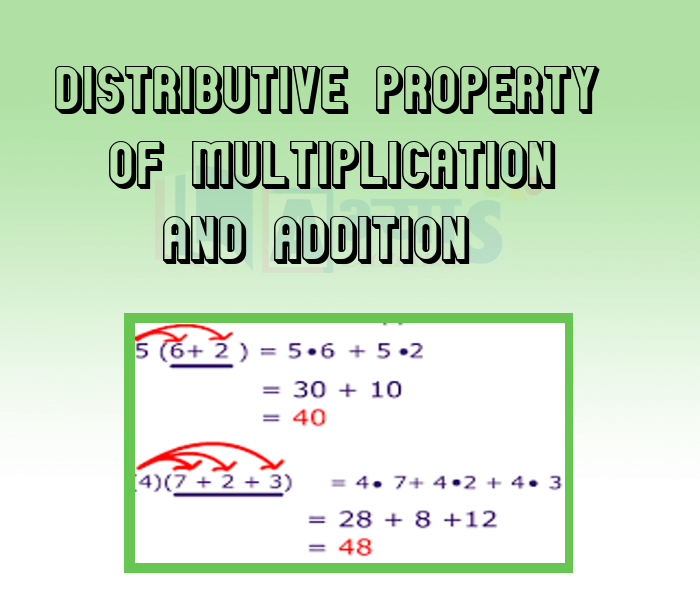Distributive property of Multiplication and Addition












Distributive property of Multiplication and Addition
Distributive property of Multiplication and Addition:
The distributive property is usually first approached by students when they start advanced multiplication problems, meaning when adding or multiplying, you have to carry a one. This can be problematic if you have to solve it in your head without working the problem out on paper. In addition and multiplication, you take the larger number and round it down to the nearest number that is divisible by 10, then multiply both numbers by the smaller number. For example:
36 × 4 = ?
This can be expressed as:
4 × (30 + 6) = ?
Which allows you to use the distributive property of multiplication and answer the question as follows:
(4 × 30) + (4 × 6) = ?
120 + 24 = 144
Column - I Column - II (A) The difference of two consecutive whole munbers (p) (0) (B) The product of two non - zero consecutive whole numbers (q) 1 (C) Quotient when zero is divided ny another (r) 6 (D) 2 added three, times to the smallest whole number (s) even | |||
| Right Option : B | |||
| View Explanation |
Find the product of 475 X 102 ? | |||
| Right Option : B | |||
| View Explanation | |||
Which of the following is correct and follows distributive property of 21 X 6? | |||
| Right Option : A | |||
| View Explanation | |||
Students / Parents Reviews [10]
A marvelous experience with Abhyas. I am glad to share that my ward has achieved more than enough at the Ambala ABHYAS centre. Years have passed on and more and more he has gained. May the centre flourish and develop day by day by the grace of God.

Archit Segal
7thBeing a parent, I saw my daughter improvement in her studies by seeing a good result in all day to day compititive exam TMO, NSO, IEO etc and as well as studies. I have got a fruitful result from my daughter.

Prisha Gupta
8thIt was a good experience with Abhyas Academy. I even faced problems in starting but slowly and steadily overcomed. Especially reasoning classes helped me a lot.

Cheshta
10thIt has a great methodology. Students here can get analysis to their test quickly.We can learn easily through PPTs and the testing methods are good. We know that where we have to practice

Barkha Arora
10thMy experience with Abhyas academy is very good. I did not think that my every subject coming here will be so strong. The main thing is that the online tests had made me learn here more things.

Hiya Gupta
8thI have spent a wonderful time in Abhyas academy. It has made my reasoning more apt, English more stronger and Maths an interesting subject for me. It has given me a habbit of self studying

Yatharthi Sharma
10thAbhyas Methodology is very good. It is based on according to student and each child manages accordingly to its properly. Methodology has improved the abilities of students to shine them in future.

Manish Kumar
10thMy experience was very good with Abhyas academy. I am studying here from 6th class and I am satisfied by its results in my life. I improved a lot here ahead of school syllabus.

Ayan Ghosh
8thIt was good as the experience because as we had come here we had been improved in a such envirnment created here.Extra is taught which is beneficial for future.

Eshan Arora
8thAbout Abhyas metholodology the teachers are very nice and hardworking toward students.The Centre Head Mrs Anu Sethi is also a brilliant teacher.Abhyas has taught me how to overcome problems and has always taken my doubts and suppoeted me.
